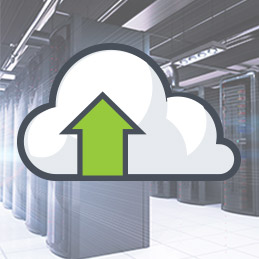MSPs: Learn How to Boost Cloud Services Revenue by 50 percent in 1 Year
Submitted by Tracy Staniland on
Cloud continues to be the focal point as Strategic Solution Providers (SSPs) focus on how to leverage Azure, Microsoft Office 365 and AWS to propel their services.
The channel eight to ten years ago was pretty straight forward, however, as evolution takes hold the Strategic Services Provider is emerging. In 2010, 25% of traditiona l Manag ed Service Providers (MSPS) offered managed services today 70% offer managed services. MSPs are a victim of their own success and are now experiencing eroding market share and many are looking for ways to increase profitability while providing customers with a more predictive model for IT.
l Manag ed Service Providers (MSPS) offered managed services today 70% offer managed services. MSPs are a victim of their own success and are now experiencing eroding market share and many are looking for ways to increase profitability while providing customers with a more predictive model for IT.
Statistic: $193.34 billion: Overall global managed services market size by 2019, up from 2014’s 107.17 billion, with CAGR of 12.5%.
Source: MarketsandMarkets
Legacy VARs and MSPs need to figure out to transition to this new business model of the Strategic Services Provider which requires a new mindset, new thinking and new approaches from a sales and marketing perspective. 55% of the revenue model for the new Strategic Services Provider must be recurring revenue based, not project based.
2015 Revenue Mix - Strategic Service Providers
Source: The Channel Company

Many Strategic Service Providers have focused their business practice on helping customers transition to cloud services by providing the architecting, consulting and solution provisioning required to make the transition as seamless as possible. SSPs drive two-thirds of their revenue from services. In this new world, the cloud is the centre of the universe. Successful SSPs are investing in business guidance services, not building data centers.
From a sales model perspective, SSPs need to build a disciplined sales team consisting of hunters and farmers. With their sales compensation plans aligned appropriately to their roles, tying commission to corporate goals and executive expectations. Hunters should be focused on landing new customers or logos and farmers should be focused on driving consumption out of services already sold. 10% of the farmer’s commission should be tied to incentives and 50% of the hunter on commissions. And commissions should be paid at the time of billing, not contract signing.
Partners will need a plan to cross the threshold – one that will allow them to increase their cloud services revenue by half – in one year. Asigra has developed a Cloud Services Monthly Recurring Revenue Framework that helps guide SSPs through the “Why, What and How” pillars as they develop their business plan including corporate objectives, personal goals and metrics and the overall execution plan to achieve success.
Listen to this on-demand webinar featuring The Channel Company and Eran Farajun, Executive Vice President, Asigra, one of 2014’s CRN Coolest Cloud vendors, to hear more about the new Strategic Service Provider business model and the Asigra framework.

